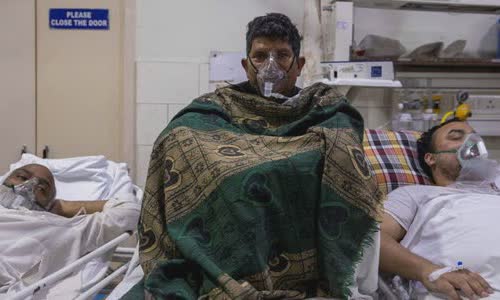At least 10 Indian states recognize increased infection coefficients, signs that this country is likely to have entered the third Covid-19 wave.
Indian epidemiologists are worried when the NCOV infection coefficient (R (R) in many localities is increasing.

Photo: Reuters
When the second wave of Covid-19 severe outbreaks in India in May, the national R coefficient was up to 1.4, meaning that every 10 people infected with NCOV will spread to the average of 14 others.
At the time of the second Covid-19 wave lowered in July, India's R coefficient decreased to 0.9.
Covid-19 patients were treated at Holy Family Hospital Emergency Room in New Delhi, on April 29.
At least 10 Indian states are recording the rising R coefficient, in which the central state Madhya Pradesh has the highest r factor, at 1.31.
The R 1.3 coefficient means that every 10 people with Covid-19 will spread to 13 others and these people will then spread to 16-17 more people.
It is worth noting that some states once recorded the number of infections and deaths lower than the average in the second wave are having a higher R a coefficient than 1, indicating that the trend of infection increases.
The rising R coefficient may be early warning signal about the beginning of the third wave, Samiran Panda, the leading epidemiologist at the Indian Medical Research Council (ICMR), warning.
According to experts, the number of Indian infections increased because of the Delta transformation, while localities restricted to travel and more ignorant people were translated rooms and did not wear a mask.
Indian health authorities still cannot officially claim the third wave began, at least until they recorded the number of new cases continuously increasing.
The Director of the World Health Organization (WHO) Soumya Swaminathan said that the Tuesday Covid-19 wave in India will not cause heavy consequences as the recent outbreak.
We are still not subjective.



 Saima Shahbaz
Saima Shahbaz







